Addiction is more than a physical dependence on substances. Even after detox, when the body is no longer hooked, one is still at high risk of relapse. Factors like stress, environmental cues, and social networks can create a strong ongoing urge to use again. That's why therapies like Cognitive Behavioral Therapy (CBT) come in handy. CBT helps one escape cravings and learn to manage what life throws at them without alcohol and drugs.
Cognitive behavioral therapy is a type of talk therapy. It bases on the belief that addictions arise and are worsened by a series of negative thought patterns. CBT helps people identify and explore thought patterns that tend to undermine their ability to make healthy choices. It then arms them with the right tools to reframe their thoughts and go back to a healthy and addiction-free life.
CBT is a problem-specific and purposeful approach that needs one's active participation to succeed. It uses different strategies to identify thought patterns that lend towards an addiction. These strategies include mental distractions, relaxation techniques, role-playing, and journaling. Unlike other therapies that dwell on the past, CBT focuses on present-day thoughts, challenges, and behaviors.

Different approaches and techniques can help address behaviors, emotions and thoughts. Here are some common therapeutic approaches that involve CBT:
Cognitive therapy: It finds and changes negative thinking behaviors, patterns and emotional responses.
Rational emotive behavior therapy (REBT): REBT finds and changes irrational beliefs. It also helps one to learn to identify and change these thought patterns.
Dialectical behavioral therapy (DBT): DBT focuses on behaviors and thoughts. It also integrates mindfulness and emotional regulation approaches.
Multimodal therapy: It looks into psychological issues by addressing the seven modalities. These include imagery, cognition, sensation, affect, behavior, interpersonal traits and biological/drug considerations.
CBT can be used as a short-term treatment geared to help people with:
This article will focus on CBT and its help in treating drug-related addiction.

Cognitive-behavioral therapy's primary goals in treating drug and alcohol addiction are:
In the therapy session, the patient will learn different attributes that will help uphold their sobriety. They will learn coping skills, resilience, assertiveness, stress management skills and relaxation skills. CBT has two main components in its use to treat drug-related addiction. These are skills training and functional analysis.
FA is an essential step in CBT. In FA, the therapist and patient break down behavior chain into its respective parts. They seek to identify the feelings, thoughts, and situations that caused the substance abuse in the first place. Once they determine how and why a behavior was formed, the therapist and patient can then change parts of the behavior chain to get a different result.
People turn to drugs or alcohol to manage stress, anxiety, depression and so on. If a person gets to a point where they're receiving treatment for substance abuse, it’s likely they’re abusing drugs as a way to cope with some set of problems. Skills training tries to help these people unlearn bad habits and learn better coping skills. This way, they’ll know how to apply them in situations that trigger their substance use. Skill training changes the way people think about their addiction. It also teaches them better ways to tolerate their inner feelings of distress.

CBT was initially designed to prevent relapse when treating alcohol issues. This is according to a research-based guide by the National Institute on Drug Abuse. Later on, the therapy was adapted in the treatment of drug-related addictions. These drugs include cocaine, nicotine, marijuana, and methamphetamine. It was also applied in the treatment of addiction to prescription drugs. The National Institute on Drugs Addiction post cited one interesting study. This study showed that 6 in 10 patients in CBT had a clean toxicology screening at their 12-month follow up.
Another evidence from several large-scale trials and quantitative reviews point to the effectiveness of CBT for addiction. An NIH group did a meta-analytic review of CBT for drug use and addiction, including 34 randomized controlled trials. CBT treated a total of 2,340 patients. The results revealed that marijuana patients got the best outcomes. Opioids and cocaine patients also got incredible results. But individuals with polydrug dependence had the smallest effects. That's to say, those struggling with multiple-drug use issues would benefit more from other treatments.
CBT for drug addiction includes a range of interventions, either combined or used in isolation. The interventions can also be provided in individual, or group therapy. Group formats involve therapy with groups like Narcotics Anonymous or Alcohol Anonymous. Individual formats include detox, pharmaceutical, or residential treatments
Cognitive Behavioral therapy banks on the idea that feelings and actions are caused by one's thoughts as opposed to outside stimuli like situations, people, or events. While a person cannot change their situation, they can change the way they think about them. CBT has been shown to help an individual in recovery to:
When untreated, a person can turn to drugs and alcohol to try to avoid the discomfort or pain that these situations cause.

CBT is an intense short-term treatment program. Under normal circumstances, a patient gets a weekly session for about 5-20 weeks. However, the frequency of sessions and length of treatment tend to differ based on a range of aspects. For instance, individuals with strong support from family and friends may have shorter treatment duration. The same applies to those with mild cases of addiction.
Other factors that might influence duration and treatment plan include patient needs, personal experiences and the duration of substance use. The type of disorder and level of withdrawal symptoms may also weigh in.
Sharing needles and syringes for any use is a risk for various sexually transmitted infections. A person can get STIs like HIV or Hepatitis by injecting into the vein, fat, or directly into a muscle. Reusing containers to dissolve drugs, sharing water to clean drug equipment, and reusing filters are also risk factors. The STI exposure risk from needle use is very common among drug addicts, so let's look at the statistics.
Studies reveal that those who inject drugs are most vulnerable to STIs. According to UNAIDS special analysis, 2018, the risk of HIV among those who inject drugs was 22 times higher than the general population. Other vulnerable groups included gay men, female sex workers and transgender women whose risks to HIV were 28, 13, and 13 times higher than the rest, respectively.
In another UNAIDS report, men account for the biggest share of higher risk of HIV infection, comprising 80% of the 11.8 million people globally who inject drugs. The report further revealed that approximately 13.1% of those who inject drugs worldwide were living with HIV. Despite the prevalence of drug injection and STIs, most people do not seek treatment for their addiction, due to fear of judgment, among other reasons.
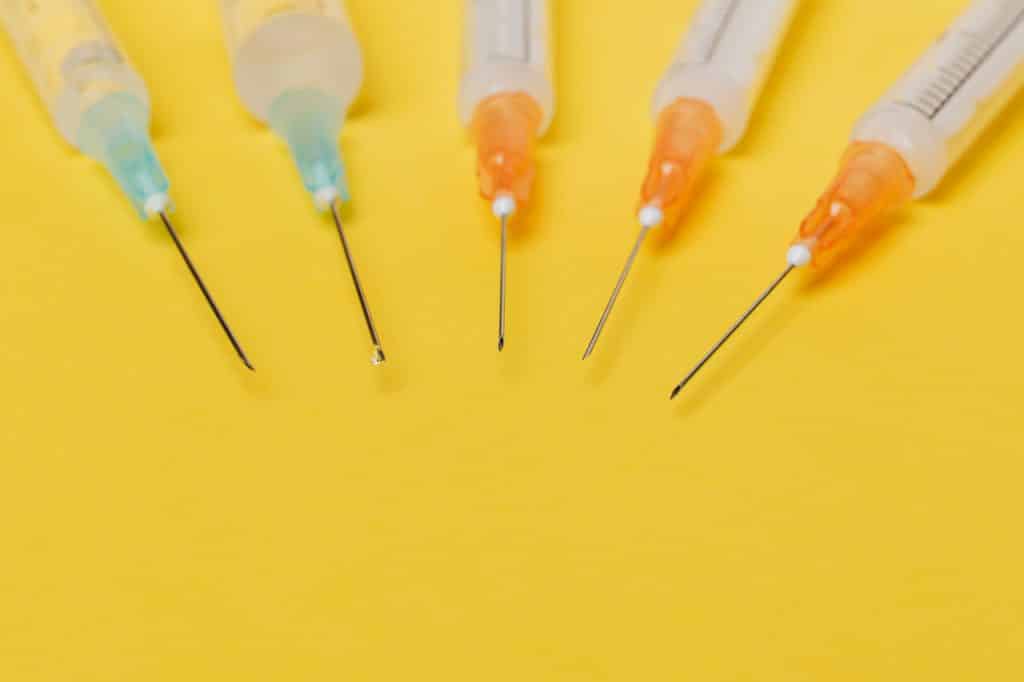
In the last 20 years, the United States has seen a rapid increase in overdose deaths and STIs due to injection and misuse of prescription and illicit drugs like fentanyl and heroin. Injection drug use (IDU) and its vast health impacts are a public health crisis, with approximately a million people reporting IDU in the past year.
The increases in IDU have caused outbreaks of HIV and higher rates of diseases like Hepatitis B (HBV) and hepatitis C (HCV). This is because viruses spread through body fluids – either through:
Drug use and addiction are often connected to HIV/AIDS since AIDS was first determined as a disease. Centers for Disease Control and Prevention indicate that 1 in 10 HIV diagnoses happen among those who inject drugs. In 2016, IDU accounted for over 150,000 (or 20%) and 50,000 (21%) of recorded HIV cases among men and women, respectively. Besides, pregnant and lactating mothers who are HIV infected can pass down the virus to their baby irrespective of their drug use.
Different studies show a close link between injecting drugs and sexually transmitted diseases. This should serve as a wake-up call to those who inject drugs. But surprisingly, the people who inject drugs continue with their needle exchanges and sharing habits despite the glaring danger.
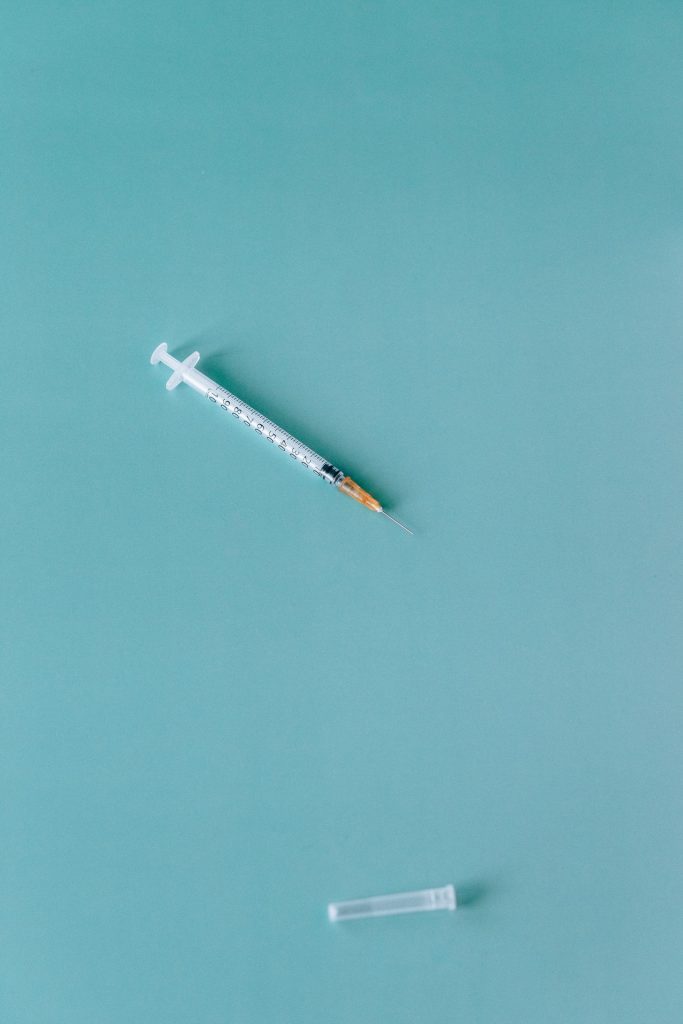
Here are some common reasons they don’t stop.
Easy access: some communities do a good job distributing syringes and needles and disposing of used ones. But not everyone has access to such facilities. Some addicts have to go to the pharmacy stores, which have their own sets of rules around selling such supplies. So, an addict prefers to use what’s available. Besides, most addicts don’t have time to clean or look after themselves, let alone find new drug equipment.
Avoiding expenses: the drug equipment isn’t cheap either. A box might range between $10 and $50, which might be too expensive for someone whose primary focus is on getting money to buy more drugs.
Assumption: most drug users are cautious about sharing equipment with strangers. But they let their guards down when it’s someone close – like a friend or family - because they assume they know them better. So they don’t mind sharing needles and syringes.
Lack of education: some addicts have no idea that sharing drug equipment exposes them to STIs. Others are aware, but only to some extent. A good example is when they avoid sharing needles but end up sharing water used to clean the equipment.
As we’ve discussed above, injecting drugs increases risks for developing a range of infectious diseases, including HIV, which causes AIDS. Studies estimate that about 36% of cumulative AIDS cases in the US resulted from injected drug use.
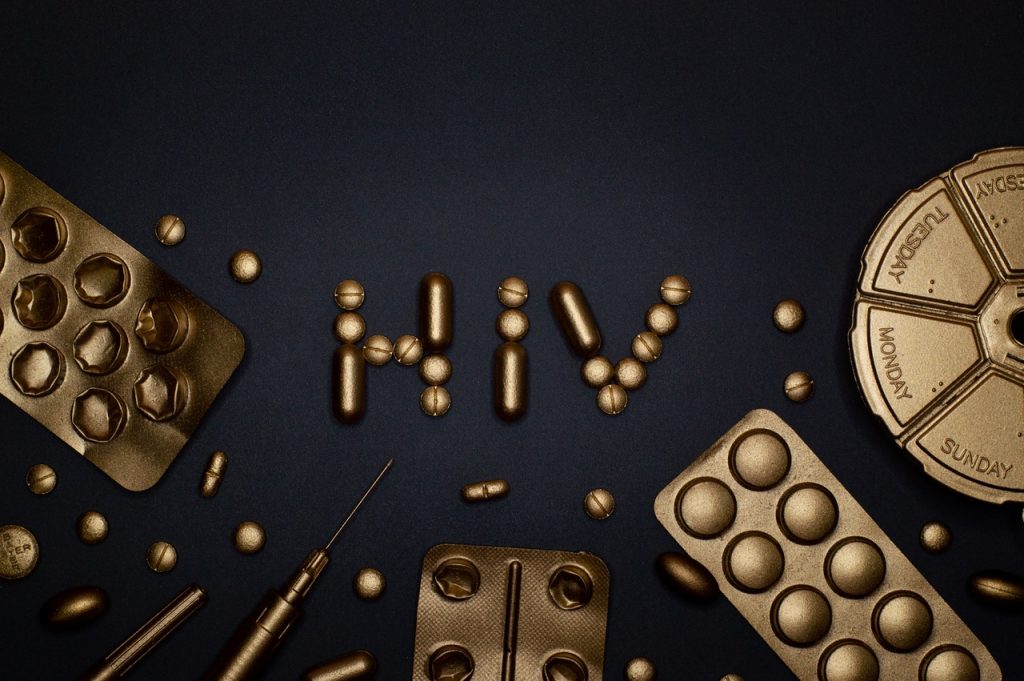
HIV is transmitted through the exchange of blood and other bodily fluids. According to the CDC, HIV can live in a used drug supply for up to 42 days, depending on temperature and other factors. This explains why sharing needles, cookers, water, and cotton is potentially risky.
Sharing paraphernalia can also cause the transfer and spread of other infections like HBV and HSV, each of which affects the liver and may result in liver cancer, liver failure, liver cirrhosis, and permanent scarring. According to a study by the UCSF, drug injections may account for 60% of HCV cases in the US alone.
IV drug abuse also impairs judgment and lowers inhibitions, making it easy for one to indulge in risky sexual behaviors. It is pretty common for those who are high on drugs to have unprotected sex, which exposes them to HIV, HBV, and HCV. But these aren’t the only infections that can be transmitted sexually. Others include genital herpes and Human Papillomavirus (HPV).
Not using drugs: the best way to lower the chances of contracting STIs through IV drug use is to stop using drugs. Seeking help from a reputable treatment center can be a great way to achieve sobriety.
Not sharing drug supplies: viruses are only transmitted through IV drug use and sexual contact. So, one should avoid ever sharing drug equipment. Many communities have syringe services programs that issue free sterile syringes and needles and safely dispose of used ones.
Getting tested and treated: those who administer drugs intravenously should test for HIV, HBV, and HCV. If the tests turn out positive, treatments exist to help keep everything in check. Drug users who are negative for HBV can take advantage of the vaccination to prevent transmission.
Take pre-exposure prophylaxis (PrEP): PrEP is a daily dose of HIV medications that prevent one from getting HIV. It is effective in lowering the chances of getting HIV infection for those who inject drugs. Those who have been exposed to the virus can take PEP to prevent becoming infected. But this should be done within 72 hours after recent possible exposure to HIV.
The skin is the largest organ in your body. It is also the most visible one and is often referred to as the window into a person’s overall well-being. The skin carries a clue about the health of other organs. Changes in the skin color or texture may sometimes indicate severe health conditions, according to dermatologists.
Drug and alcohol use can have severe consequences on the body organs. Drugs like cocaine, and heroin can significantly stress the heart and damage kidneys. Alcohol, on the other hand, puts tremendous strain on the liver. But since it is impossible to see what’s happening in the body with bare eyes, the damage may go unnoticed for years.
Luckily, you can identify drug or alcohol-related issues by looking at the skin. When drug users abuse substances for a long time, they may experience sores, inflammation, infections, lesions, and even skin rotting. This happens for a range of reasons, including:
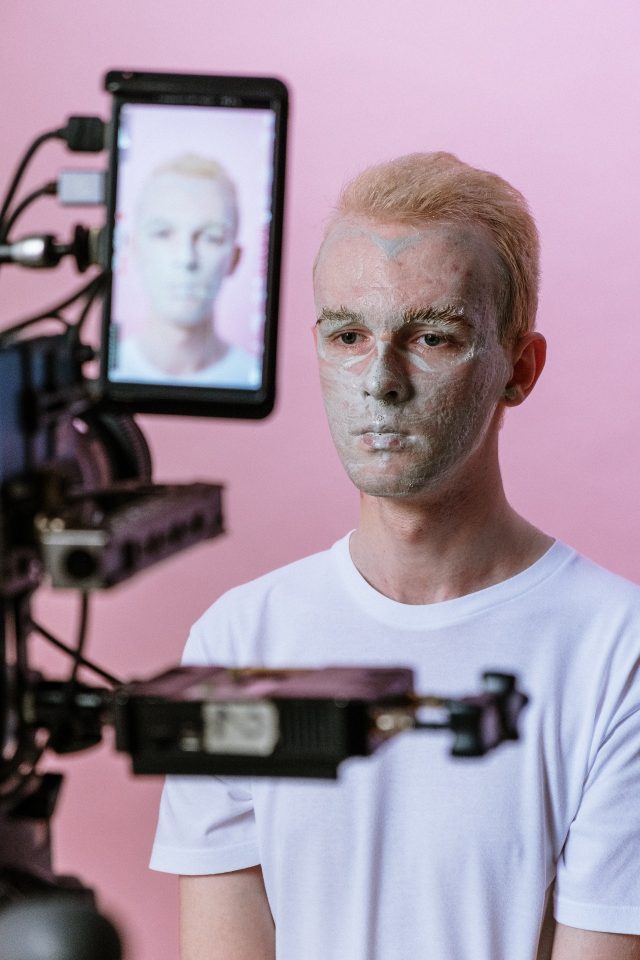
Regular skin problems can be a sign of drug abuse.
Substance abuse can cause dehydration through the effects of the drugs themselves. Illegal drugs are known to increase sweating, speed of breathing, urination, and diarrhea, and vomiting. In some cases, the drugs make a person over-active, interfering with the body’s awareness and attention to ignore the need for fluid. Dehydration is characterized by dry eyes, chapped lips, dry mouth, and feeling thirsty. Prolonged use may also cause dry, flaky skin. Dry skin is more prone to wounds, blemishes, and poor healing.
Rashes are common in heavy meth users. They manifest as festering and painful-looking sores. Meth (and cocaine) users develop sores for various reasons, but the most common is that they pick and scratch their skin. They do so because it feels as though bugs are burrowing underneath the skin. Some say they feel a sensation of drug coming out of their skin. So they pick at it to the extent that they tear their flesh open. Meth mites – the feeling that insects or bugs are crawling under or on the skin – is a common side effect of excessive methamphetamine use. It’s also the biggest giveaway of meth addiction.
Heroin use may also lead to intense itching because it triggers the production of histamine. It may cause immense, blistering rash or dark patch on the skin (with velvety feel). Heroin use may also cause red patches to form all over the body.

Healthy skin can deteriorate at a rapid pace when illicit drugs are being used.
Another reason meth users develop sores is that the drug isn’t clean. It’s made with battery acid, which causes abscesses. And the byproducts used during its production can irritate the skin and cause itchy red sores that look like burning skin rash. Besides, crystal meth suppresses the immune system, making it hard for the body to fight off infections and bacteria. Couple that with poor hygiene, and you create a perfect storm for meth rash. This can occur in the face, arm, shoulder, back, and between the legs.
Some drug dealers add other substances to cocaine to stretch their product and increase profit margins. One such substance is levamisole, which is linked to necrotizing fasciitis, a skin-eating disease. It manifests in an extreme blackening of the outer ear and reddening of the cheeks. The same effects may happen on the back, chest, buttocks, legs, and abdomen.
Not everyone who uses drugs will experience skin disorders. It’s all up to a person’s genetic markup. Stimulants can cause hypersensitivity, hives, cold sores, and the swelling of the epidermis. In extreme cases, these drugs can cause severe conditions like Toxic Epidermal Necrolysis (TEN) and Stevens - Johnson syndrome (SJS).
SJS is a rare yet severe skin and mucous membranes. It is characterized by a painful rash that blisters and spreads. The outer layer of the rash dies, peels off and starts to heal after several days. A more severe form of SJS is called TEN. TEN is a rare and potentially life-threatening condition that affects over 30% of the skin and causes immense damage to the mucous membranes. In TEN, the peeling progresses fast, leading to large raw areas that may weep or ooze.
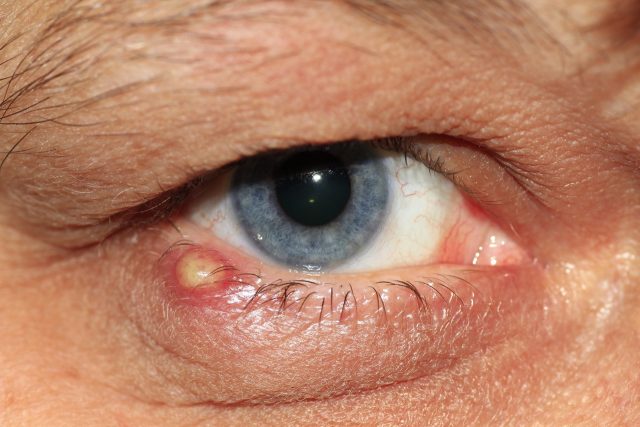
Unexplained sores, rashes and scabs are common with certain types of drugs.
According to the American Academy of Dermatology, atopic dermatitis (AD) is a common skin condition that affects more than 1 in 10 Americans. However, the condition, which makes the skin red and itchy, is common among those struggling with drug addiction. AD is a chronic pruritic inflammatory skin condition that mostly affects the neck, arms, cheeks, and legs.
These usually arise because of smoke, weight loss, or other toxins. But drug use can also cause premature aging, lines, wrinkles, and so on. Smoking drugs like heroin, crack, cocaine, meth, or marijuana harms the skin, creating a wrinkled, leather-like texture that makes one look older. Smoking also speeds up and facilitates skin conditions like eczema, psoriasis, and even skin cancer.
When a drug-dependent person is dehydrated, exhausted and malnourished, they may experience drug-induced hyperpigmentation. This is where they experience color changes in the skin, folds, and spots in different parts of the body. Drugs like heroin, prescription meds, crack cocaine, and cocaine can cause a nutritional problem. Advanced stages of addiction can make one neglect regular foods and meals, leading to exhaustion and malnutrition.
Since the drugs lower the body’s immunity, any infection that shows up in the skin may take a long time to heal. Sometimes, it might worsen. Many cocaine and heroin users who inject drugs develop infections at the injection point, which becomes severe with repeated use.

The sooner you address a problem with drugs or alcohol, the easier it will be to treat. Get help now, before it's too late!
Treatment programs exist to help those struggling with drug addiction to overcome their using problem, and resulting skin problems. Addiction treatment allows patients to heal their mind, body, and spirit. Most of these centers have experts who can offer medical advice, diagnosis, or treatment. In extreme cases, these experts may refer the patient to a specialist.
The medical marijuana craze has ignited a multi-billion dollar industry. From oils to tinctures to lotions to lattes to e-cigarettes in all shapes and sizes, for pain, anxiety, depression, seizures, autism, soft skin, hangover, etc., marijuana is everywhere. In fact, those who invested in top marijuana companies in 2016 are potentially up more than 1000%. Yet another danger lurks under the guise of "synthetic marijuana", "K2", or "spice".
It is not a surprise that marijuana is gaining popularity globally, including on Wall Street. After all, cannabinoid (CBD) –the second most prevalent ingredient in marijuana – has been touted for different health issues. It’s also backed scientifically for its effectiveness in treating the worst childhood epilepsy syndromes like Lennox-Gastaut Syndrome and Dravet Syndrome which fail to respond to antiseizure drugs. Studies have also shown its effectiveness in addressing anxiety and chronic pain too.
But the main concern with CBD products is that they are mainly sold as a supplement as opposed to medication. At the moment, the FDA has only approved Epidiolex for a prescription, and does not control the purity and safety of dietary supplements. So it is hard to tell whether a product has active ingredients at the dose as indicated or other unknown elements.
One study tested 84 CBD products from 31 companies and revealed that 69% were mislabeled. Some had too much CBD; some had no CBD at all. Some contained too much THC – the active ingredient in marijuana that’s associated with the “high”. Other surveys indicated that a fraction of the products contained harmful synthetics that are health hazards.
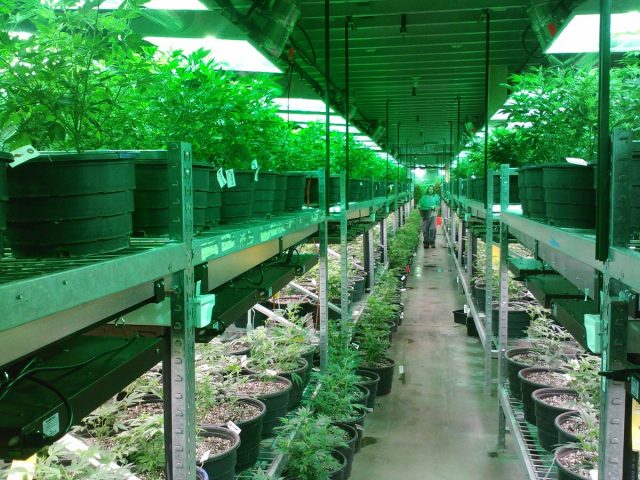
Both the legal and illegal marijuana business is booming across the United States. Pot farms, like this one are creating a variety of products, with little oversight.
Medical marijuana can be safe and beneficial to human health. The only reason marijuana is still federally illegal is because of THC, which affects one’s ability to concentrate, focus and even keep track of time. But with the rising popularity and demand of the legal natural marijuana, numerous companies have sought to simultaneously minimize production time and boost profits by creating synthetic cannabinoids.
Synthetic CBDs are a large family of chemically unrelated compounds that act on the same brain cell receptors as THC. Synthetic marijuana products are human-made, but mimic THC, the primary psychoactive ingredient in marijuana. They are misleadingly marketed as legal and safe alternatives to real marijuana. However, synthetic cannabis affects the brain more than natural marijuana, and their effect can be dangerous or even life-threatening. Unsuspecting users (mostly teens and young adults) assume that the fake weed is harmless – but that’s a grave mistake.
Synthetic marijuana is either sold as a liquid to be vaporized and inhaled or sprayed onto plant material to be smoked. It goes by several other names:
Synthetic cannabinoids are not one drug. Manufacturers produce and sell hundreds of different synthetic chemicals. Each year, new products with unknown health risks make entry into the market. As mentioned earlier, fake weeds are prevalent because consumers believe they are legal and relatively safe. This can be linked to the misconception that many users have, that marijuana is a naturally occurring weed and is, therefore, safe to use (but that’s not all there is to it). Depending on what’s available or personal preference, synthetic cannabinoids is either:
In 2010, over 11,000 individuals were admitted to the emergency room due to synthetic marijuana use, according to the National Institute on Drug Abuse. And in 2016, 2,695 calls were made to poison control centers about people who were harmed by using synthetic CBD. What’s disturbing is that 75% of these people were between 12 and 29 years old.

Many teenagers and young adults are turning to synthetic marijuana to pass drug tests, or because they think it is a natural, safe alternative to cannabis. It can be quite dangerous, however.
Most K2/Spices are illicit. So, manufacturers try to get around the laws by producing new drugs with different ingredients or by marking them as “not fit for human consumption.” They are labeled not for human to mask the intended purpose and avoid the FDA’s control of the manufacturing process.
Synthetic cannabis products are not safe. And since there are no standards for producing, packaging or distributing the chemicals, it might be hard to tell the contents of products and the potential reaction. Again, synthetic CBD can have varying levels of chemicals between batches, or even within the same batch. The products may also be contaminated with toxic chemicals or drugs.
Synthetic marijuana can have adverse effects on the brain and overall health. Common side effects of synthetic cannabinoids include:
Note that these effects may vary based on factors like the type of synthetic marijuana, the dose and duration of use. K2 can be addictive, meaning a person may experience withdrawal symptoms when they quit cold turkey.
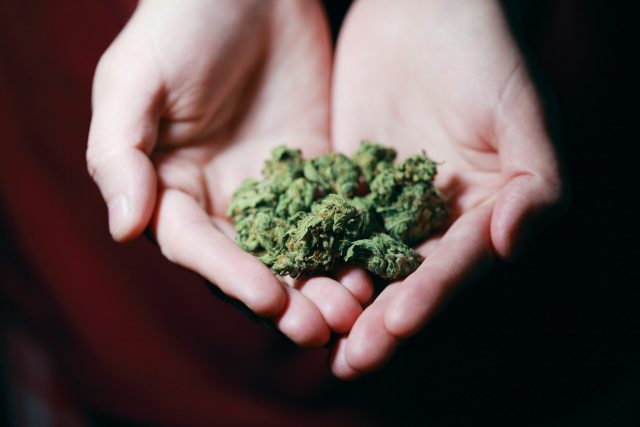
While it may look nearly identical to weed, synthetic cannabis can actually be very dangerous to the user.
The CDC issued a warning after receiving reports of multiple cases from the Department of Public Health, including deaths among those who used fake K2. Other states have also reported the same cases. The warning urged everyone who’s bought a product that goes by names (spice, K2 or synthetic marijuana) to throw it out. It also encouraged those who had already used to call for help or go to the closest healthcare facility in case they experience severe, unexplained bruising or bleeding.
In another report, synthetic marijuana –which is 85 times more potent than THC – led to a “Zombie Outbreak” in New York City in 2016. For several hours, users were staring blankly, moving slowly and occasionally groaning. 18 out of the 33 people who displayed signs were transported to the hospital. The incidence happened after using K2 that Reddit users describe as “out-of-this-world potent.”
In 2018, 71 people overdosed from synthetic CDB in Connecticut. A significant percentage of the cases occurred on the New Haven Green. And although no deaths were reported, six or more victims had near-death experiences. In the same year, the drug was linked to 22+ cases of severe bleeding from gums, nose and in urine in the Chicago area.
According to the National Institute on Drug Abuse (NIH), the number of adults worldwide with a gambling disorder (including pathological gambling) is nearly 5.3% of the total population - nearly 390 million individuals. [1]
In the United States, roughly 15% of Americans gamble at least once per week, with 10% of them being teenagers. [2] As gambling rates have increased in recent years, so have deaths from a drug overdose. Since 1990 drug overdoses in the United States have tripled, with addiction costing the U.S. economy more than $600 billion each year. [3]
As phone games continue to adopt the now-universal “loot box,” individuals are being exposed to gambling mechanics at a younger and younger age. Understanding how the mind and body react to gambling, and its similarities to drug addiction are critical if we are to combat the ever-growing epidemic of addiction.

The 'rush' of gambling can be very much like the brain chemistry when someone is addicted to drugs.
Before understanding how drugs affect the brain, it’s important to get some key terms out of the way. Contrary to the now popular belief, dopamine has less to do with pleasure, and more to do with rewards. According to drugabuse.org, “Just as drugs produce intense euphoria, they also produce much larger surges of dopamine, powerfully reinforcing the connection between consumption of the drug and the resulting pleasure.” [4]
This change in reward systems can negatively affect the brain and cause the individual to no longer feel motivated to do things that previously brought meaning to them. It can also lead to tolerance, leading the individual to need higher quantities of the drug in order to achieve the same high as before. This creates a negative feedback loop and for many, an endless cycle unless the victim receives outside help.
Many people can understand how drugs can be addictive because the body builds up a tolerance and, eventually, a need for specific chemicals. More difficult, however, is seeing how gambling can become addictive. The psychological effects of gambling can be just as strong as the most potent drug. In 2013 gambling disorders were moved to the “Substance-Related and Addictive Disorders category, which includes alcohol and drug addictions.”[5]
Just as with drugs, individuals can build up a tolerance to gambling, needing higher and higher stakes in order to meet the cravings that once satisfied them. Jon Grant from the University of Chicago states, “When people try to stop, they go through withdrawal, with insomnia, agitation, irritability, and a feeling of being ill at ease, similar to what we see in some substance abuse disorders.” [6] Despite not having injected any foreign chemicals into the body, the mind becomes powerful enough to manifest real physical symptoms until the victim returns to the high-stakes of gambling.
Online gambling provides the same excitement of a Las Vegas casino from virtually anywhere in the world. The reduction in barriers to entry allows an individual access at any time of the day. Previously restricted to vacations and one-timers, these new casinos have become large businesses preying, especially on teenagers and young adults.
In 2010 online gambling casinos grossed 29.3 billion dollars, an increase largely attributed to college students, with 23% of students reporting they have gambled online before. [7] In a study done by Mary Wilber and Marc Potenza entitled “Adolescent Gambling,” it was reported that early initiation and family influence were the two biggest factors to whether someone would develop a gambling addiction. [8]
Despite the lack of a biological link towards gambling, family history plays just as strong a role in determining whether a child will grow up with a gambling addiction as exposure. The similarities between the likelihood of an individual developing gambling or drug addiction are striking.
One of the most difficult parts of confronting a drug addiction is for the user to admit that they have a problem and receive treatment. Despite over 21 million Americans having an addiction, only 10% receive treatment. [9] If it’s difficult to convince a drug addict that they have a problem, it is even more so for an individual with a gambling addiction.
Because gambling addictions are less visible to outsiders than drug addictions, many friends or family members can have no idea the victim has a problem. Couple this with the increased availability in gambling through online casinos and an individual could have a serious gambling problem without appearing to have any problem at all.
Gambling addictions also get swept under the rug because 76% of problem gamblers have a major depressive disorder, according to the NCPG (National Council on Problem Gambling). [10] Loved ones may attempt to fix what they perceive to be depression, and all the while being oblivious to the individual’s gambling problem. In order to receive help, they must first admit they have a problem. It’s important for loved ones to get involved by realizing the danger of compulsive gamblers and understand that many of the tell-tale signs are the same as with drug addictions.
Gambling and Drug Addiction share many similarities; they both tap into the brain’s reward center and create negative feedback loops that perpetuate the user to continue to use at higher amounts until tolerance is established.
Once tolerance is established, the user must risk more and more in order to get the same rewarding feelings that they once had. Withdrawals accompany both behaviors that make it incredibly difficult to quit, as well as a similar form of denial between the users of both drugs and gamblers. Both gambling and drug addictions have side effects such as depression and a lack of motivation that make them difficult to classify.
It is important for loved ones to get involved as early as possible in order to prevent users from getting out of control. As rates of drug and gambling abuse continue to rise, it’s important that we pay attention to our appetites so that a one-time thing doesn’t become a habit.
https://www.ncbi.nlm.nih.gov/pmc/articles/PMC3361844/
https://addiction.lovetoknow.com/wiki/Gambling_Addiction_Statistics
https://www.drugabuse.gov/publications/drugs-brains-behavior-science-addiction/drugs-brain
https://www.brainfacts.org/diseases-and-disorders/addiction/2015/gambling-addiction-and-the-brain
https://www.brainfacts.org/diseases-and-disorders/addiction/2015/gambling-addiction-and-the-brain
https://addiction.lovetoknow.com/wiki/Gambling_Addiction_Statistics
https://www.ncbi.nlm.nih.gov/pmc/articles/PMC2945873/
Drug addiction often involves many different substances and is certainly not limited to only illegal drugs. Drug seeking behaviors can be developed from a legally-obtained prescription from a doctor, this happens quite often.
One of the leading causes of drug addiction in the United States is the over-prescription of pain-blocking narcotics. These painkillers are quite effective at treating pain but are also extremely addictive.
Up to 30 percent of prescription painkillers are used by someone other than the patient they were prescribed to. When you take a step back and realize that these are legally prescribed drugs being abused, it can seem daunting to think about the amount of illegal drugs that are being abused as well.
Drug warning signs are often some of the first clues you will notice in a friend or loved one who is addicted to or seeking out drugs.

Once a person becomes addicted to drugs or alcohol, their behavior will be geared towards maintaining their high.
Some drug-seeking behaviors are more difficult than others to spot, but it’s imperative to take action as soon as possible if you spot any substance abuse warning signs.
Often, when someone has first started abusing drugs, they may seem more secretive and try to hide the habit. This is in stark contrast to someone who has been addicted to drugs for a while, as they generally don’t care about hiding their habit, and are focused more on fueling their addiction, exhibiting clear drug-seeking behaviors.
Some early warning signs are:
As you may have noticed, some of these drug-seeking behaviors are more obvious than others. One of the first signs you might notice is a change in their behavior. There’s no black and white description of how behavior might change, as drugs affect each individual differently.
The best chance you have of catching drug usage early is to foster a strong relationship with friends, loved ones, or anyone you suspect of having a high risk for potential substance abuse.
Most of the time, people who have just started taking drugs will lie in order to keep their addiction private. They fear judgment, legal problems, or even just being cut off from a substance that is temporarily giving them the euphoria they crave.
As previously mentioned, drug addiction and substance abuse are not limited to only illegal drugs. In fact, a large number of initial drug addicts become addicted to legal pain prescriptions.
These pain prescriptions may seem harmless at first, and when taken as prescribed, do indeed help many people. The problem is that they are very easy to abuse and are often more expensive than illegal drugs.
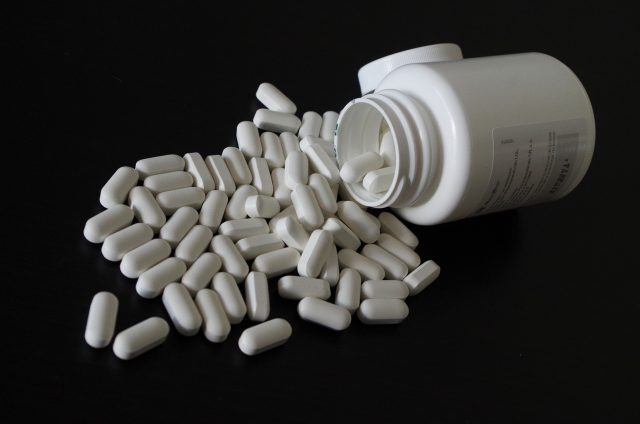
Opioid dependence can happen in as little as 7 days. Once the prescription runs out, many Americans turn to drugs like heroin to avoid painful withdrawal symptoms.
Many people who become addicted to illegal drugs start by abusing their prescription pain pills. As they develop a tolerance to these prescription narcotics, they start needing more and more in order to reach the same level of euphoria that they seek.
This can get out of hand very quickly and end up costing thousands of dollars a month since prescription pain killers are often very expensive.
When someone who is addicted to prescription pain killers can’t seem to get enough of them or runs out of money, they often turn to other drugs.
Drugs such as heroin are almost always much cheaper on the street than prescription pain killers are and have a much more potent effect. To someone addicted to prescription painkillers, it can seem very enticing to pay ¼ of what they normally would for prescription pills and get the same or even stronger effects.
If you notice any warning signs in a friend or loved one, it’s important to have an honest discussion with them before things spiral out of control, as illegal drugs pose serious health risks, and can be very difficult to get off of.
If you suspect a friend or loved one of drug-seeking behavior, it can be challenging to know what to do.
Many parents who suspect their child of drug abuse immediately rush off to the nearest pharmacy and force their child to take an in-home urine test. While this may work in the short term, it doesn’t address any underlying issues and may cause an even bigger rift in your relationship.
The first step to having a conversation about drug usage is making sure the individual knows that you care about them.

Approaching a loved one about substance abuse is never easy. Let them know your intention is to help them.
Before you even dive into a drug-related conversation, you need to make sure that you have a good relationship. This isn’t always possible, but as long as you’re doing everything you can think of on your side, it’s often enough to create some level of trust in the relationship.
No one wants to admit that they are struggling with a substance abuse problem, however, if they feel that you truly care about them as an individual, they will be much more likely to feel that you have genuine intentions and are ready to listen.
Once you do have a conversation about drug usage, it’s important not to immediately chastise or talk about how poor of a decision drug usage is. Chances are, whoever you’re speaking with about drug usage already knows this. Instead, be kind, supportive, and ask how you can help.
One tip that has been proven to help is to create a help-line relationship. This means that when someone who is addicted to drugs feels a strong urge to use, they get in touch with you immediately.
You can then help to talk them through the pain of addiction they may be feeling, and offer help, support, advice, and even spend time with them to ensure they don’t relapse.
Overall, identifying drug-seeking behavior can be tricky, but it is certainly not impossible. The most important thing you can do is develop a solid relationship and keep your eyes out for signs of behavioral changes.
Remember that overcoming addiction is always possible, so never give up hope!
According to the National Institute on Drug Abuse (NIH), the number of Americans using illicit drugs is on the rise. According to a study conducted in 2013, an estimated 24.6 million Americans (9.4% of the population) over the age of 11 had used an illegal drug in the past month. A similar study was conducted in 2002, which showed only 8.3% of the population using illicit drugs. [1] As drug use continues to rise, ‘it’s imperative to know the signs, as they could ultimately be life-saving.
Which Illicit Drugs Cause Red Eyes?
Though many drugs impact the coloration or behavior of the eyes, it can be difficult to come to concrete conclusions regarding which drugs an individual may be taking, by simply looking at their eyes.
While certain drugs have telltale signs, looking at a drug user’s behavior and identifying it based purely on symptoms can be difficult. In addition to observing symptoms, observing eye discoloration or dilation will yield the most accurate results.
Typically, the drugs listed below are known for their influence on the eyes.
Marijuana: Red, bloodshot eyes
Cocaine/Hallucinogenics (LSD)/Ecstasy: Pupillary dilation, mydriasis (enlarged pupils even in bright environments)
Methamphetamine: Rapid Eye Movement
Heroin/Opioid Abuse: Pinpoint Pupils
Alcohol: Larger pupils as well as slower pupil reaction, eye twitching (myokymia)
Marijuana
One of the signature signs of marijuana is the bloodshot eyes that accompany its use. Many people believe that edibles are a way to avoid them, yet this is not the case. The reason for eye redness is not due to the smoke, but rather to the THC contained within marijuana. THC lowers blood pressure, which can cause blood vessels to dilate. [2] Other signs of marijuana use include increased appetite, dry mouth, lack of motivation, and anxiety. [3]
Cocaine/Hallucinogens
Cocaine is known for enlarging the pupils; the relationship is so strong people sometimes refer to large pupils as “cocaine eyes.” Sometimes individuals experience eye reddening along with the dilation, but this is not common for everyone. Other signs of cocaine use are rapid heart rate, cocaine-induced anxiety, nervousness, aggression, insomnia, and sensitivity to light. [4] Mydriasis is a condition where the pupils stay dilated even when not using cocaine; individuals who use cocaine, hallucinogenics, ecstasy, and meth can develop this condition. [5]
Methamphetamine:
Methamphetamine is known for giving off a very quick and powerful high that fades quickly. Meth rapidly increases the dopamine in the brain. Dopamine is responsible for motivation, body movement, and the “rewards center” of the brain. Short term effects include fast breathing, irregular heartbeat, increased blood pressure, and rapid eye movement. Long term effects of meth use include weight loss, addiction, memory loss, anxiety, paranoia, and hallucinations.[6]
Heroin/Opioid Abuse
Signs of Heroin abuse include pinpoint pupils, bluish lips, difficulty breathing, and a weak pulse. [7] An easy way to differentiate between users of cocaine and heroin are the pupils. Heroin users will have very small pupils, whereas users of cocaine will have pupils that are very large. Typically heroin users do not have red eyes and will do anything to get their hands on the drug. Heroin has a difficult withdrawal period of at least a week as the body can quickly develop a dependency on it, even after a quick or short binge period.
Opioid abuse is more prevalent today than ever; substances such as Oxycodone/Hydrocodone and Fentanyl are flooding the market. Reeling from the over-diagnosis of ADHD and prescribing too many opioids to children, doctors are cutting back on prescribing opioids, but many are still heavily addicted. Now that doctors are less inclined to satisfy their needs, individuals are turning to disreputable dealers to get their pain-killers. Fentanyl is 100 times more potent than morphine and can kill even in the smallest doses.[8] It carries many of the same signs as heroin, with the main sign being the pinpointed pupils.
Alcohol
Though consumption of alcohol is legal for those over 21 in the United States, ‘it’s important to know the signs as well as the differences between an individual using illicit drugs versus one who is intoxicated. Intoxication increases pupil size just like cocaine, but for the vast majority of individuals, this will be far less pronounced than those who are using cocaine or hallucinogens. Signs of intoxication also include slurred speech, slower pupil reaction, as well as eye twitching. According to the NIH, 26.9% of Americans over the age of 18 reported binge drinking in the last month. With Alcohol-related deaths reaching 88,000 a year, [9] alcoholism is no joke and should be treated just as seriously as many of the illicit drugs on this list.
Warning Signs
In a study conducted by PMC, a subsidiary of the NIH, a group of neuroscientists explored what the early detection of illicit drug use in teenagers was. Their results indicated that one of the first signs of teenage drug use is changes in behavior and mannerisms. They noted that changes in behavior, violent tendencies, isolationism, lack of motivation, and instability were some of the key factors in identifying illicit drug abuse among teens. Constant fatigue, poor eating habits, and of course, the possession of drug paraphernalia are the most obvious indicators of substance abuse. [10] Intervention early is the best way to assist loved ones you may believe are struggling with illicit drug use. Without regulation, many of these drugs can be improperly measured or laced within another substance. They can even be potent enough to kill unsuspecting victims.
Conclusion
Without regulation, these drugs can be incredibly dangerous. Betting a life on a word of mouth or reputation instead of regulation can be a costly choice. Understanding the risks as well as the signs of these drugs can help save a loved ‘one’s life or stop addiction before it starts. While there are various indicators such as pupil dilation or redness of the eyes, the most important step is to stay close to your loved ones so you can be ready to identify changes in behavior.